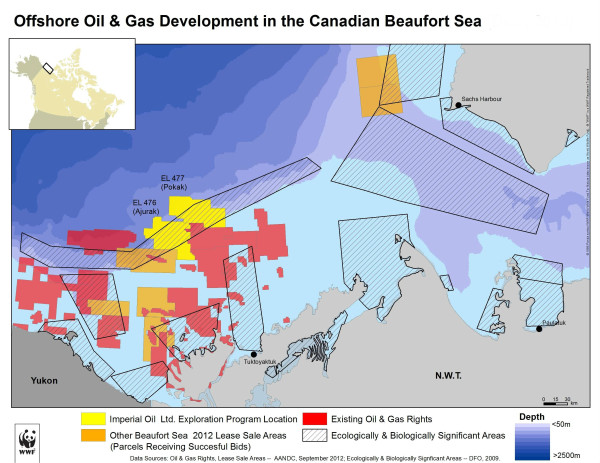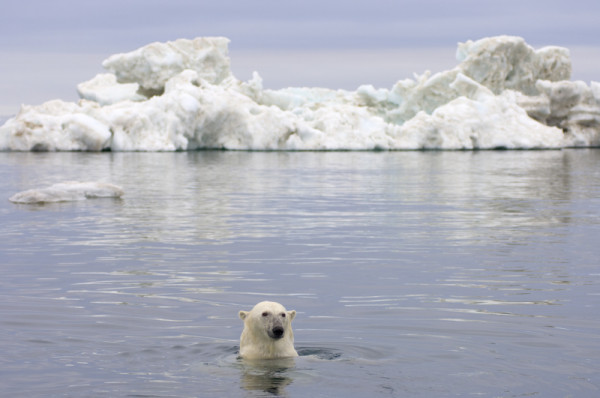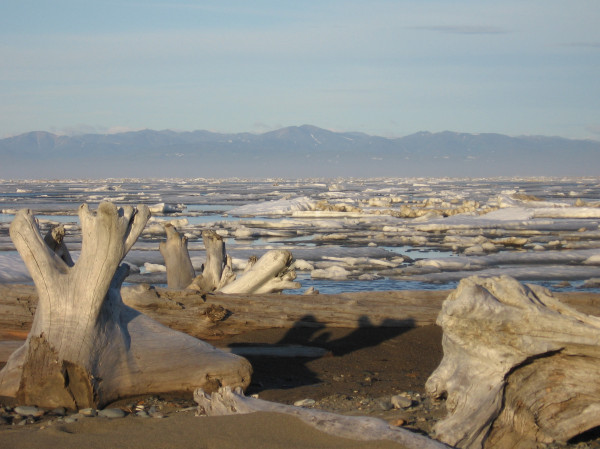Offshore Arctic drilling? Not so fast!
This week we were pleased to learn that an important environmental regulatory body has made a principled and wise decision to take a thorough and cautious approach to offshore Arctic drilling. The Environmental Impact Screening Committee (EISC) – a body established under the Inuvialuit comprehensive land claim agreement, governing a large swath of northern Yukon and Northwest Territories – is requiring more planning and reviews for a major deepwater offshore drilling proposal.
The EISC was asked to review a recently filed application to carry out exploratory drilling in the deep waters of Canada’s Beaufort Sea, submitted by Imperial Oil on behalf of a joint venture project that includes ExxonMobil and BP. The proposal is significant and precedent-setting: it’s the first drilling application in Canadian offshore Arctic waters since the National Energy Board (NEB) completed its comprehensive review of Arctic offshore drilling requirements in 2011. Perhaps even more significantly, if approved, it would allow for wells to be drilled in waters as deep as 850 metres, far deeper than anything ever attempted in Arctic waters.

Not surprisingly, WWF and many others question the wisdom of putting resources into high-cost, high-risk frontier fossil fuel ventures in the absence of a national energy strategy that will get us to our Greenhouse Gas reduction targets. But the proposal seems especially perverse in the Beaufort Sea, an astonishingly rich Arctic ecosystem that is home to belugas, bowhead whales and polar bears. It is also the source of livelihood for the Inupiat, Inuvialuit and Gwich’in peoples. The drilling would take place at the edge of the continental shelf, where an upwelling of ocean currents mixes deeper waters with surface waters, creating a profusion of plankton and the fish and whales that feed on this plankton.

The impact of a major oil spill on species and local communities would be significant, and a full-scale blowout would be catastrophic. In particular, a blowout that is not contained before winter freeze-up would spew oil uncontrollably for the 8-9 months of winter ice-cover, without the possibility of taking any steps during that time to control the blowout. The oil would bind with the newly-formed ice, be carried far and wide by ocean currents, and released into a new environment the following spring.
In 2011, we participated in a comprehensive review of offshore Arctic drilling requirements, carried out by the National Energy Board (NEB). With Ecojustice as our legal counsel, we intervened with well-researched critical analysis of the technical challenges to offshore drilling in the Arctic, including blowout prevention as well as oil spill cleanup, where the cold waters, harsh conditions and lack of infrastructure combine to make oil spill cleanup more difficult than any other region on Earth. We shared our analysis, we participated in the Round Table convened by the NEB, and we listened directly to the perspectives and concerns of Inuvialuit wildlife harvesters. The final report from the NEB shows that those concerns were heeded; the NEB’s new Filing Requirements for Offshore Drilling in the Canadian Arctic require an applicant to demonstrate its ability to drill a Same Season Relief Well (SSRW) “or to meet or exceed the SSRW policy objective of minimizing harm to the environment;” in other words, that it can contain an uncontrolled blowout before winter freeze-up.

So, our question regarding the current application by Imperial, ExxonMobil and BP is simple: Do they have the proven capacity to contain a worst-case blowout before winter freeze-up?
The answer, at this stage, is that Imperial has not provided enough information to even start to answer this question. That’s what we told the EISC in our submission. And we’re pleased that the EISC wholeheartedly agreed with us, highlighting in their decision letter a number of serious deficiencies: incomplete information about the project; no management plan; lack of detail on measures to prevent and respond to oil spills; inadequate inventory of environmental values; and inadequate consultation with Inuvialuit communities. Not surprisingly, they required the project to go through a full review by the Environmental Impacts Review Board, with the directive that these deficiencies be addressed.
We thank the members of the Environmental Impact Screening Committee for doing their jobs and doing them well. WWF was the only environmental NGO to comment on the application, and we’ll continue to stay involved. We anticipate a renewed application and a comprehensive review process, and we expect to contribute to that review, again with Ecojustice as our legal counsel. Stay tuned.
